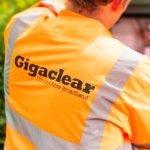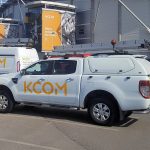Government in £1bn Deal for 95% Geographic UK 4G Mobile by 2025
The Government has today announced a new £1bn deal with Three UK, Vodafone, O2 and EE (BT) to establish a new Shared Rural Network (SRN), which will see the mobile operators working cooperatively together in order to extend the geographic coverage of 4G (mobile broadband) services to 95% of the UK by 2025.
The Government had previously committed in 2017 to ensure that mobile networks delivered 95% geographic 4G coverage of the UK by 2022 (here), although clearly that will not now be achieved. By comparison Ofcom notes that at present the 4G geographic coverage from all operators is just 66% of the UK (91% if only looking at EE)- here.
The problem is that catering for remote rural areas is very expensive (not profitable) and there have been huge disagreements over how to achieve the desired outcome. One option, the idea of so-called Rural Roaming, was rejected by EE because they viewed it as giving a free ride to rivals that haven’t made the same investment (excluding ESN masts as those can be shared), not to mention stifling the attraction of future investments.
Advertisement
Similarly the proposed coverage obligation under Ofcom’s future auction of the 5G friendly 700MHz band (here) hasn’t been particularly popular either, not least since it only aims for the lower coverage figure, will take years to deploy via 5G and the related spectrum discounts on offer could only be enjoyed by two of the winning bidders.
In response the mobile industry announced during May 2019 that they had developed an alternative industry-led solution (here), which essentially proposed both the reciprocal sharing of existing masts in certain areas and the demand-led building and sharing of new masts. All that remained was to reach an agreement with the Government and Ofcom and today we got the answer.
The Shared Rural Network Agreement
Under this plan the primary Mobile Network Operators (MNO) would work to establish a new organisation to deliver the SRN, backed by £532m (over the 20 year lifetime of the programme) of their own investment to help open-up and share existing masts / infrastructure to “close almost all partial not-spots” (i.e. areas where there is currently only coverage from at least one but not all operators).
In theory this would also mean additional mobile coverage for 280,000 premises and 16,000 kilometres of roads. As part of this the Government will also commit £500m of investment to go even further and “eliminate total not-spots” (i.e. hard-to-reach areas where there is currently no coverage from any operator) by supporting the build of new masts.
Advertisement
Government-owned mobile infrastructure built as part of the Emergency Services Network (ESN) “will also be made available to all four operators” (they make this sound new, but ESN masts were always intended for sharing). “This is expected to contribute to the coverage target by delivering up to an additional 2% of geographic coverage per operator, in some of the most remote, rural locations,” said the Government.
The benefits of all this will be felt across all four nations of the United Kingdom, albeit with the greatest coverage improvements in Scotland, Wales and Northern Ireland (likely due to the greater quantity of remote rural terrain).
Key Points of the SRN
➤ Ofcom’s plan to include a coverage obligation for two operators to achieve 90% geographic coverage by 2024, which was part of their plan to auction off the 700MHz radio spectrum band (in turn both operators would have benefited from a discount on the spectrum), will now be dropped and revised according to today’s agreement.
➤ The SRN proposal would instead see each individual operator reach 92% coverage by 2025, with licence obligations taking effect in 2026. The collective effect of this will deliver coverage to 95% of the UK.
➤ Mobile operators have agreed to adopt new, legally-binding licence conditions. There will be interim coverage updates every year up to 2025. Ofcom will report regularly on progress in their annual Connected Nations reports.
➤ The Government and MNOs have agreed in principle terms for the SRN, although the proposal is still subject to legal agreement. The ambition is to reach a formal agreement on the SRN by early 2020.
➤ Government funding for the SRN is classified as state aid and will thus be subject to the approval of the European Commission or (depending on the circumstances of EU Exit) the Competition and Markets Authority (CMA).
➤ The programme would be delivered jointly by all four MNOs but it is expected that organisations across the industry would have the opportunity to get involved in the delivery of the programme at various levels of the supply chain, building the required infrastructure in an open, fair and transparent way.
The Government believes the SRN will deliver a better result for UK consumers and do so at a lower public cost overall because it enables industry to work collaboratively on improving coverage, rather than bidding competitively to do so individually.
Nicky Morgan MP, UK Digital Secretary, said:
“We are determined to make sure no part of the country is left behind when it comes to mobile connectivity. We are closing in on a deal with the mobile network operators so those living in rural areas will be able to get the fast and reliable mobile coverage they need and deserve.
Brokering an agreement for mast sharing between networks alongside new investment in mobile infrastructure will mean people get good 4G signal no matter where they are or which provider they’re with.
But it is not yet a done deal and I want to see industry move quickly so we can reach a final agreement early next year.”
An Ofcom Spokesperson said:
“We warmly welcome these commitments, which follow detailed discussions between Government, Ofcom and the mobile operators. These improvements will make a real difference to mobile customers across the UK, and we’ll ensure they’re legally binding by writing them into operators’ licences. We will also monitor and report on companies’ progress in achieving better coverage.
Separately, we will shortly set out revised plans to release more airwaves for mobile services next year. In light of today’s agreement, we are no longer proposing to include coverage requirements in our auction process. We will now press ahead, with industry, on the urgent task of getting better mobile services to people wherever they are.”
Naturally all of the major mobile operators have put out statements welcoming this agreement and so too have landowners via the Country Land and Business Association (CLA), which said: “We have been hugely frustrated at the lack of progress in improving mobile reception to date, but the legal coverage obligations now put on operators to improve the situation, through the delivery of a SRN, will ensure demonstrable improvements over the next few years for rural communities.”
Advertisement
The SRN will also be complemented by the Government’s recent move to soften planning rules (here), which should make it easier to build newer and taller masts. Building taller masts tends to mean better coverage and safety (i.e. people on the ground are put further away from the signal source), which in turn means fewer smaller masts are needed to reach the same area (i.e. less clutter, not more). Sharing existing masts will also help to reduce the overall population of such infrastructure.
All of this sounds very good, although the National Association of Local Councils (NALC) has already voiced strong opposition to any changes that would weaken local planning rules (here). In the past a lot of new masts have been rejected because a portion of local people chose to object and councils are very sensitive to such situations. Equally by refusing new masts communities often end up punishing those who are in need of a better signal.
Squaring the circle on such competing interest is going to be difficult, although it will be essential if the SRN is to achieve its goals. Interestingly today’s press release made no mentioned of whether the new mast builds will still be “demand-led” in the final agreement (we assume they will), which is a key point since by adopting this approach the responsibility is shifted more to local communities to decide their own fate.
One final point to make is that while today’s announcement may focus upon 4G, it’s fair to say that the operators will also look to make as many sites as possible 5G ready, so customers can benefit from the new, faster and more reliable technology as it is rolled out more widely. Vodafone has already committed to do this and obviously so will the others.
UPDATE 29th October 2019
The Government has revealed that any operator failing to meet this target could be hit with a fine worth up to 10% of their annual turnover (here).
Mark is a professional technology writer, IT consultant and computer engineer from Dorset (England), he also founded ISPreview in 1999 and enjoys analysing the latest telecoms and broadband developments. Find me on X (Twitter), Mastodon, Facebook, BlueSky, Threads.net and Linkedin.
« O2 UK Offer 4G and 5G Mobile Plans from Inside Clothing Stores

















































Comments are closed